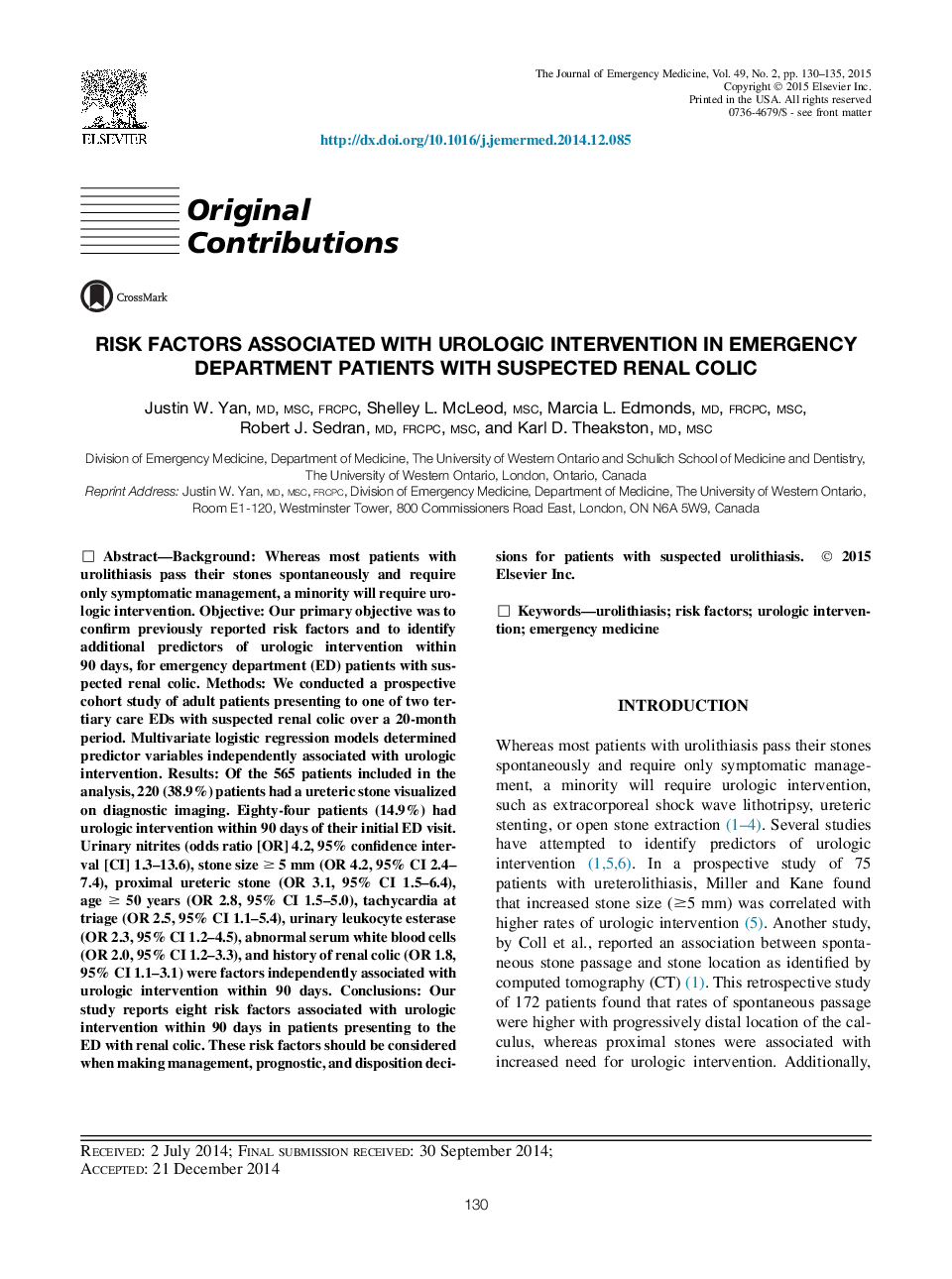| Article ID | Journal | Published Year | Pages | File Type |
|---|---|---|---|---|
| 3246338 | The Journal of Emergency Medicine | 2015 | 6 Pages |
BackgroundWhereas most patients with urolithiasis pass their stones spontaneously and require only symptomatic management, a minority will require urologic intervention.ObjectiveOur primary objective was to confirm previously reported risk factors and to identify additional predictors of urologic intervention within 90 days, for emergency department (ED) patients with suspected renal colic.MethodsWe conducted a prospective cohort study of adult patients presenting to one of two tertiary care EDs with suspected renal colic over a 20-month period. Multivariate logistic regression models determined predictor variables independently associated with urologic intervention.ResultsOf the 565 patients included in the analysis, 220 (38.9%) patients had a ureteric stone visualized on diagnostic imaging. Eighty-four patients (14.9%) had urologic intervention within 90 days of their initial ED visit. Urinary nitrites (odds ratio [OR] 4.2, 95% confidence interval [CI] 1.3–13.6), stone size ≥ 5 mm (OR 4.2, 95% CI 2.4–7.4), proximal ureteric stone (OR 3.1, 95% CI 1.5–6.4), age ≥ 50 years (OR 2.8, 95% CI 1.5–5.0), tachycardia at triage (OR 2.5, 95% CI 1.1–5.4), urinary leukocyte esterase (OR 2.3, 95% CI 1.2–4.5), abnormal serum white blood cells (OR 2.0, 95% CI 1.2–3.3), and history of renal colic (OR 1.8, 95% CI 1.1–3.1) were factors independently associated with urologic intervention within 90 days.ConclusionsOur study reports eight risk factors associated with urologic intervention within 90 days in patients presenting to the ED with renal colic. These risk factors should be considered when making management, prognostic, and disposition decisions for patients with suspected urolithiasis.
